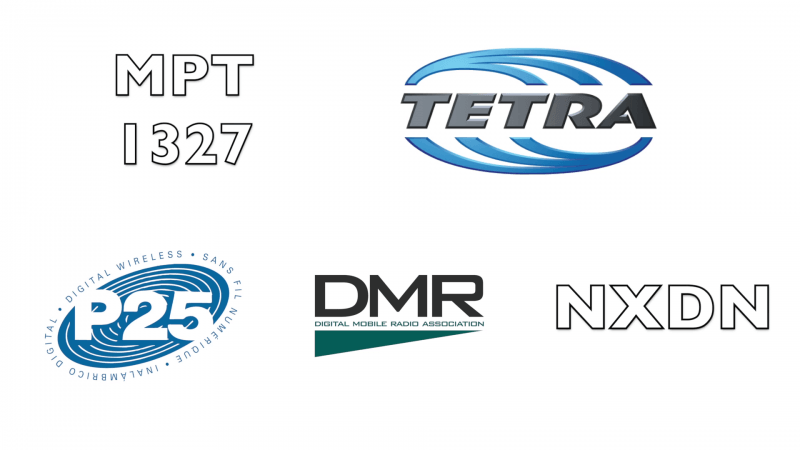Basic Radio Awareness
Communications Systems
Different types of radio
We have now covered Conventional, Trunking, and Simulcast systems. Next we’ll cover the different radio technologies that actually support these different types of operation.
Conventional FM: As previously mentioned, conventional FM is a popular technology in analog radio. Almost every major manufacturer in the world supports some form of conventional FM technology.
MPT1327: Perhaps the most widely used analog trunking technology today is called MPT 1327. It is named after the UK Ministry of Post and Telegraph that invented this particular open standard. A number of different manufacturers support this trunking technology.
Tetra: As the world becomes more digital, a number of digital radio technologies have emerged. One of these is Tetra, developed in Europe in the late eighties. It’s very similar to GSM used in modern digital cellphones. Tetra is a 4-slot TDMA technology that works in 25 kHz (wideband) channel spacing. It’s very popular amongst large public safety agencies and used in the airports and has strong data applications. Tetra operates in specific bands: 380 to 420 MHz and in the 700/800 MHz system.
P25: Another major open standard for digital radio technology is APCO Project 25 or P25 for short which was developed specifically for public safety agencies in the United States. P25 Phase 1 differs from Tetra by being an FDMA technology and also supporting conventional, trunked, and simulcast operation (or a combination of all three of these).
P25 can be used in any licensed frequency that a public safety agency has whether it be VHF, UHF, 700, 800, even 900 MHz. It can be employed by non-public safety users as well. P25 actually comes in two phases. Phase 1 is an FDMA technology operating in the 12.5 kHz channel spacing. Phase 2 is a more recent development and is only available in trunked. It is also TDMA and offers two time slots in a single 12.5 kHz channel spacing given the equivalent of a 6.25 kHz channel.
DMR: One of the newest open radio standards is called digital mobile radio or DMR for short. It’s a TDMA technology which uses 2-time slots and operates in the 12.5 kHz channel spacing, available in any licensed frequency. Tier 2 DMR offers conventional operation and Tier 3 DMR offers trunked operation. DMR is increasingly used by businesses such as mining, utilities and transport throughout the world.
NXDN: NXDN is a FDMA technology, similar to DMR, which operates in a 6.25 kHz channel spacing. It’s not limited to any particular frequency band and it also supports conventional and trunked operation.
 Radio Academy
Radio Academy






